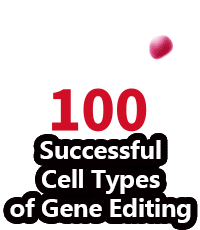Using a novel single-cell RNA sequencing approach, a team from the Oncode Institute has uncovered new details about the rates of messenger RNA synthesis and degradation in mammalian cells. As reported in Science this week, the researchers developed a method — called single-cell EU-labeled RNA sequencing — that simultaneously quantifies metabolically labeled and preexisting unlabeled transcripts in thousands of individual cells. They use the technique to determine the mRNA synthesis and degradation rates during the cell cycle and during differentiation of intestinal stem cells, revealing important regulatory strategies with distinct consequences for controlling the dynamic range and precision of gene expression. "These findings advance our understanding of how individual cells in heterogeneous populations shape their gene expression dynamics," the scientists write.
The first draft of a post-2020 global biodiversity framework recently released by the secretariat of the Convention on Biological Diversity (CBD) does not put enough emphasis on genetic diversity, according to a letter from Stockholm University's Linda Laikre and an international group of scientists. "We are deeply concerned that the goal suggested for genetic diversity — the basic element for evolutionary processes and all biological diversity — is weak," they write in Science. "It is encouraging that the CBD post-2020 draft includes genetic diversity in one of the five main goals. However, including explicit protection for genetic diversity in wild as well as domestic species, and strategies to measure the effectiveness of efforts toward that goal, will ensure that signatories prioritize this important aspect of biodiversity conservation."
Members of the Human Protein Atlas (HPA) project present an atlas of the protein-coding genes in the human, pig, and mouse brains in this week's Science. They perform a comprehensive molecular dissection of 10 major brain regions and multiple subregions using different transcriptomics methods and antibody-based mapping, and report their findings in an open-access Brain Atlas resource available through the HPA website.
Increasing the number of guide RNAs (gRNAs) may not be an effective way to boost the efficacy of
CRISPR homing gene drives, according to a new study in Science Advances. To test the hypothesis that multiple gRNAs can be used to overcome the evolution of resistance alleles that may hamper a gene drive, investigators from Cornell University developed a computational model incorporating various factors affecting drives with multiple gRNAs such as timing of cleavage, reduction in homology-directed repair efficiency due to imperfect homology, Cas9 activity saturation, gRNA activity level variance, and incomplete homology-directed repair. "We find that homing drives have an optimal number of gRNAs, usually between two and eight, depending on the specific drive type and performance parameters," the study's authors write. This finding, they add, contradicts the notion that "resistance rates can be reduced to arbitrarily low levels by gRNA multiplexing," while highlighting the need for combined approaches to counter resistance evolution.
Story source:Genome Web
Ubigene Biosciences is co-founded by biological academics and elites from China, the United States, and France. We are located in Guangzhou Science City, which serves as a global center for high technology and innovation. Ubigene Biosciences has 1000㎡ office areas and laboratories, involving genome editing, cell biology technology, and zebrafish research. We provide products and services for plasmids, viruses, cells, and zebrafish. We aim to provide customers with better gene-editing tools for cell or animal research.
We developed CRISPR-U™ and CRISPR-B™ (based on CRISPR/Cas9 technology) which is more efficient than general CRISPR/Cas9 in double-strand breaking, CRISPR-U™ and CRISPR-B™ can greatly improve the efficiency of homologous recombination, easily achieve knockout (KO), point mutation (PM) and knockin (KI) in vitro and in vivo.
Genome Editing Platform
——Focusing on the Application of CRISPR-U™ and CRISPR-B™ Gene Editing Technology
1. Provides various types of gene-editing vectors for different species.2. Provides different virus packaging services, including lentiviruses, adenoviruses and adeno-associated viruses.3. Provides high-quality services for gene knockout, point mutation and knockin cell lines.
Cell Biology Platform
——Focusing on primary cell
1. Provides over 400 types of primary cells.2. Provides culture strategies and related products for different cell types.3. Provides cell biology-related services such as cell isolation, extraction and validation.
